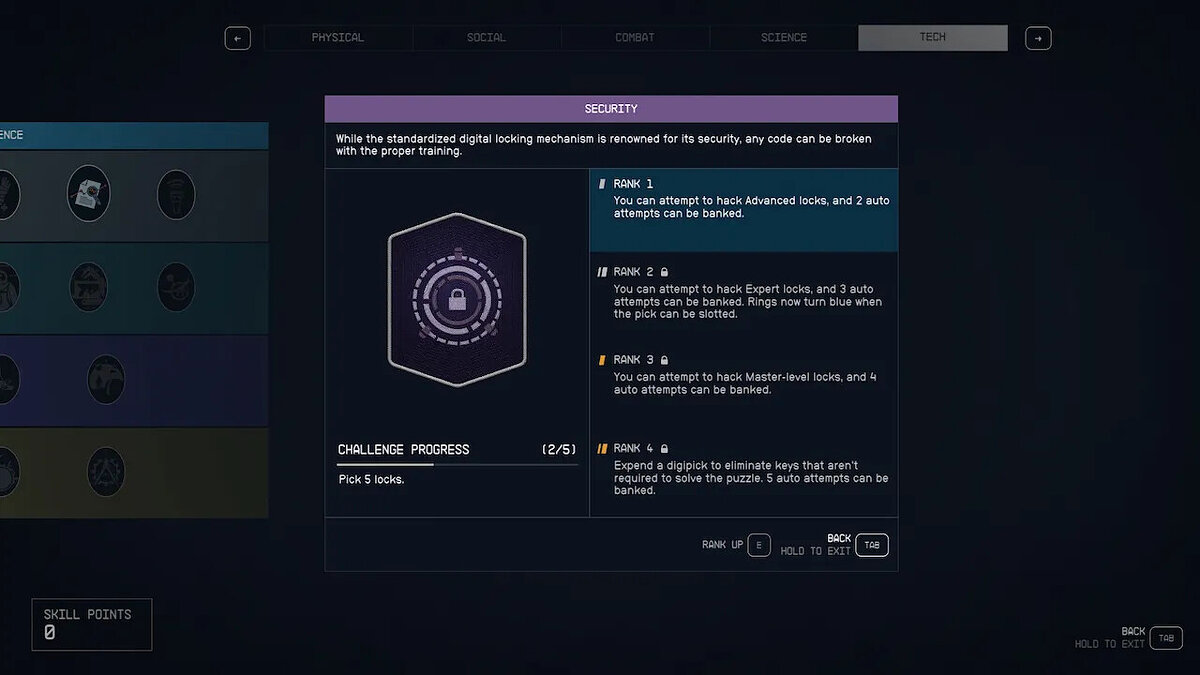Lock picking in Starfield is very different from what we have previously seen in the Elder Scrolls and Fallout series. In this guide we will tell you how the lock picking mechanics work in the game.
Some useful items and data in Starfield are hidden behind locks on safes, computers, doors, or containers. Therefore, you will have to master the new hacking mechanics.
Where to find lockpicks?
The first thing you will need is a digipick - a tool for picking locks. Not master keys or hairpins as before, but digital crackers. Luckily, finding them isn't that hard as they can be found at almost any point of interest. You will find them in the open world or on the bodies of defeated enemies. Check desks in rooms or drawers that may be nearby.
They can also be purchased from merchants in the Miscellaneous category of their inventory. Go to a department store in a major city. They usually have a sufficient number of products at an affordable price.
What can be opened?
Castles have different difficulty: "Beginner", "Advanced", "Expert" or "Master". Anyone can try to open a novice lock with a master key. More advanced locks require you to invest points in the Security skill.
Each attempt consumes a digipik. If you reset the lock, another pick will be required. You will also see a cancel option with a number next to it - this is the number of digipics you have left. Each cancellation consumes one piece.
How to pick a lock (beginner)
You don't need lockpicking skill to be able to pick a beginner level lock. But this will help you accumulate more automatic attempts that will give you one of the correct lock combinations.
In the center you will see a set of rings. On the right you will have a set of keys that you can use for this lock. There are tabs on the keys that you will have to match with the holes on the lock rings.
In the beginner's lock, you will see four digipik patterns and the number of remaining master keys. It's important to note that each of the four patterns counts towards using one digipik, but if you use one of the wrong patterns and fail to open it, then you will have to cancel your progress and use up new digipiks in the process of a new hack. The goal is to use patterns to fill in each of the circles.
Castles are made up of multiple rings - the more complex the castle, the more you may have to contend with. The first thing to decide is the outside of the castle. Look at the gaps in the castle that you need to fill and you will see a set of tool options on the right that you will have to use to do this.
These options are in random order, you will have to look through them to try different combinations. The secret is to not lock any of the picks unless you are SURE it fits. Some options may work in several cases, but only one of them will be the correct solution. So if you hurry up and it turns out that you made the wrong choice, then you will have to cancel the result, which will cost you a digipic.
The image above is an example of a beginner lock solution. You can see that both keys fit the outer ring. This means that if there are three contacts in the template, then all the points must fit into the slot, and the second template must fit the remaining slots on the outer ring.
Being able to see if multiple patterns fit on the same circle before you start placing them can be extremely helpful, so always remember where the dots match on the first pattern and then switch to another without checking if you can match it for external lock.
One trick to keep in mind is that the lugs maintain their position when rotated, so you can place one lug where you think it should be and switch between multiple options to see if they all match. Once you are sure you have two that fit, you can place them and remove the external lock.
Central locking is usually much easier as you will have fewer patterns to choose from. Thus, one of the remaining patterns must be used in the outer lock.









Comments
Post a Comment